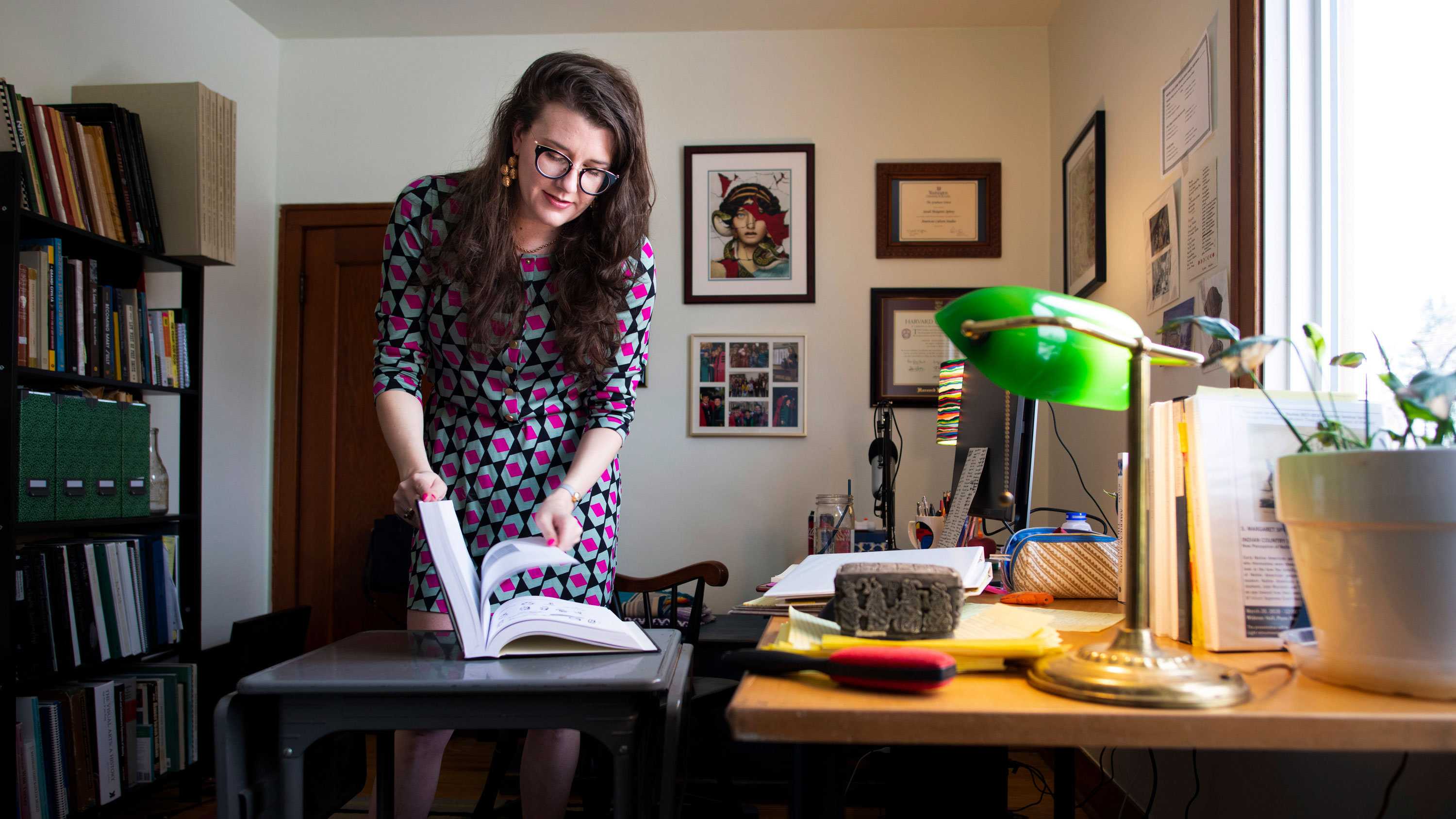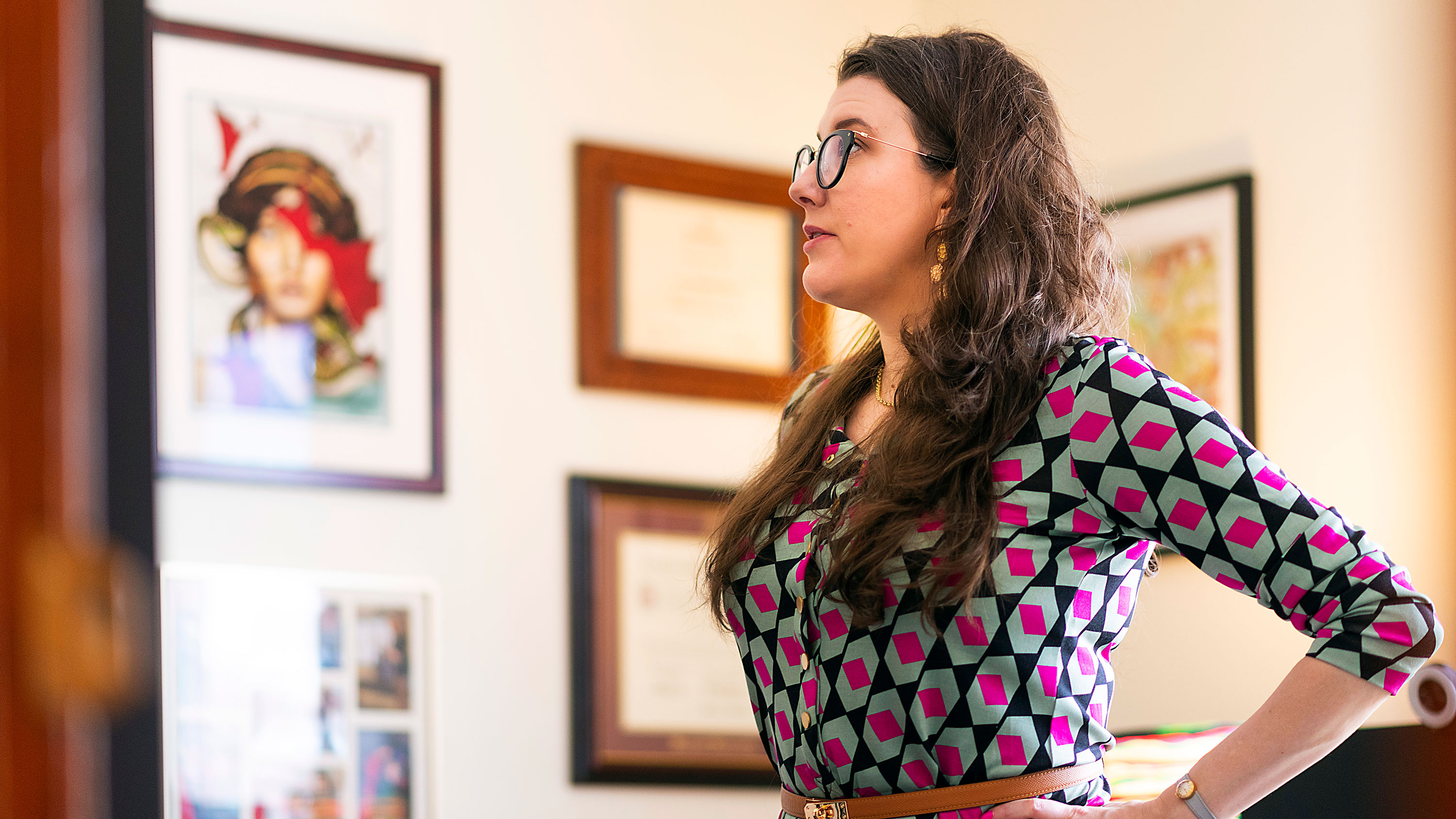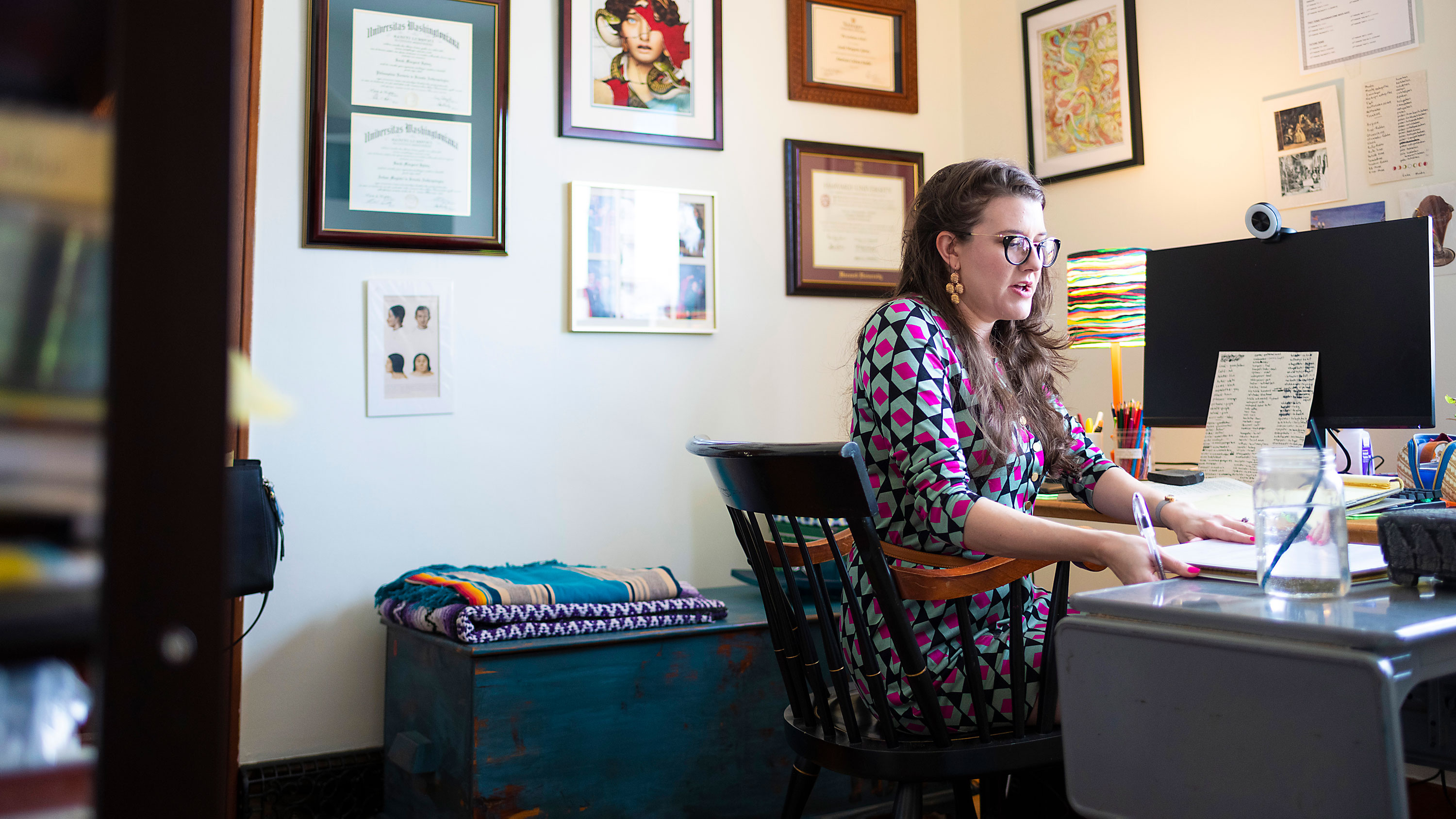Maggie Spivey-Faulkner lives to shatter misconceptions of Indigenous people with the power of science.
“As an undergrad, I saw that a lot of American public policy was built on incorrect ideas of native cultures,” said the American archeologist, who joined the University of Alberta’s Faculty of Arts this fall after a stint as a junior fellow at the Harvard Society of Fellows.
Even today, archaic U.S. Supreme Court decisions concerning Indigenous people continue to dictate policy, she said. One of the best-known examples in U.S. history—still cited as precedent and taught widely in American law schools—laid down the rationale for why Native Americans can’t possibly own land.
According to Chief Justice John Marshall’s 1823 argument in Johnson v. M’Intosh, “Indians” didn’t employ agriculture, disqualifying them from land title.
This was despite the obvious fact they had been growing crops—including corn, squash and a vast array of other products—for thousands of years. America benefited hugely from that legacy, becoming one of the few centres of independent agricultural development in the world.
“It goes back to an old Protestant idea built into American law and common law that if you're not using the land for commercial productivity, then basically you lose it,” said Spivey-Faulkner.
From an early age, Spivey-Faulkner saw that fallacious arguments like Marshall’s—and there are many—are easily quashed with archeological evidence.
“I thought the best way to try to get at those misconceptions was to speak in the language that people from western cultures understand, which is the language of science, with a PhD behind my name.”
To be an archeologist is to be “fluent in the moment of invasion by Europeans,” she said.
It also means you can state “confidently, in the language of science, that Native American people in the past did X, instead of saying, ‘An elder told me this,’ or, ‘Oral histories say that.’ Because, for better or worse, European-minded people don't care as much about that and never have.”

Seeking truth on the ground
Though she grew up in Georgia, Spivey-Faulkner is an assistant chief in South Carolina’s Pee Dee Indian Nation of Beaver Creek. Native American tribes in the Carolinas, along with those in California, have yet to gain federal recognition.
Partly due to infighting, the Pee Dee have fractured into five subgroups over the past 50 years, “which has been a big problem,” she said. “There are really hostile things happening and it’s been negative for a long time.”
Lately that’s been changing, and fast, she said. Over the past year, a sense of solidarity has returned to the Pee Dee, and they are looking partly to Spivey-Faulkner to help justify their land claims.
So she will begin in the best way she knows how—by looking for a lost, historic Pee Dee town. It doesn’t have a name, at least not yet, and has disappeared since its appearance on some maps of the 1700s.
“Archeologists have tried a couple times to find it, and now they're asking me to come in and do what we call ‘ground truthing.’ We have an idea of where we think it might be, so I'm applying for a big Social Sciences and Humanities Research Council grant in February to go find it.”
If all goes well (and depending on the state of COVID-19), she will head south sometime next year, partnering with another archeologist from the University of South Carolina, Lancaster and others from her tribe to begin the search of a lifetime.
It will be the first time she’s hunted down archeological evidence on her own tribe’s land, mainly because of the optics.
“I don't want to get labelled as an archeologist who only works on their own stuff,” she said. “I knew it was a political landmine, but things have changed a lot, quickly.”
In the meantime, when not strolling through Edmonton’s river valley—striking to her since “every river in the American south looks like the Mississippi”—she will teach three courses online.

Changing public perception and policy
One of them begins by looking at conceptions of Native Americans in federal Indian law. Then comes the pivot to science: “We'll go through and test them with archeology.
“My overarching goal—in every project I work on—is to change the way Native American people are perceived by the public and in public policy.”
She also looks forward to contributing to what she calls “unbelievable” Indigenous research capacity at the U of A, working with colleagues such as Kisha Supernant in the Faculty of Arts and Kim Tallbear in the Faculty of Native Studies—two prominent scholars with similar research interests.
“I feel like I’m not pulling the cart by myself anymore,” she said. “When I was at Washington University in St. Louis, I was the only Native graduate student in the Faculty of Arts and Sciences, as far as I could tell.
“The fact Indigenous archeology wasn't something this university thought about just last year was a big draw for me.”
Great ideas change the world, but ideas need a push forward. At the University of Alberta, we know that push has never been more important as we do our part to rebuild Alberta and keep doors of opportunity open to all. We're making research discoveries. We’re cultivating entrepreneurs. And we’re giving our students the knowledge and skills they need to turn today's ideas into tomorrow's innovations. Read more stories about U of A innovators.
